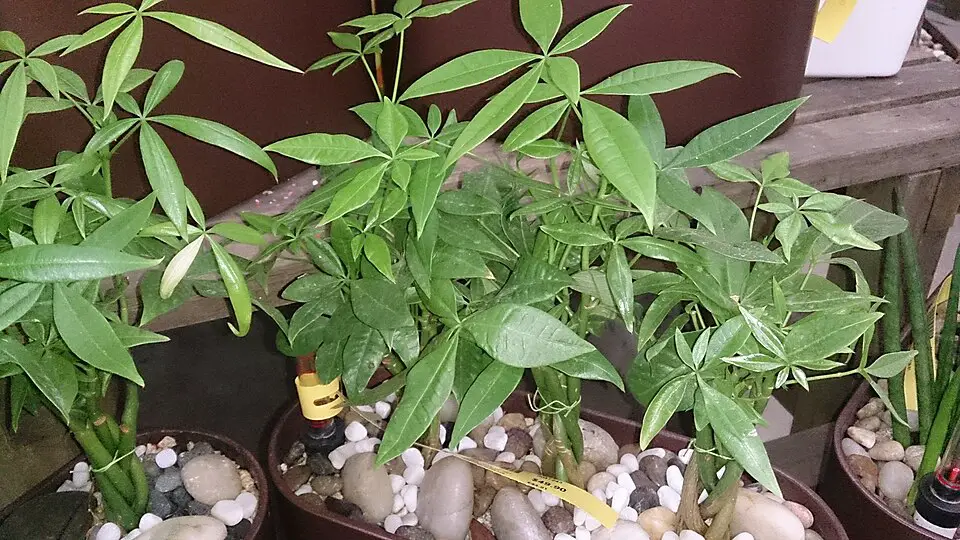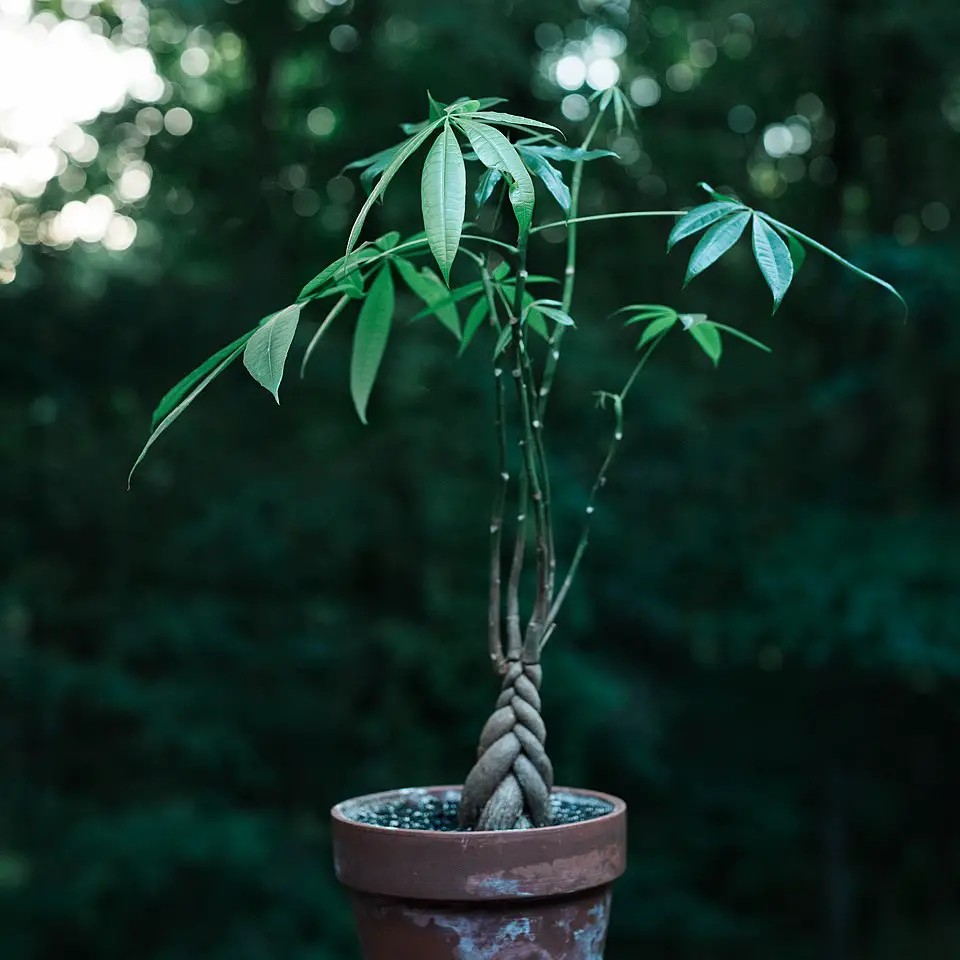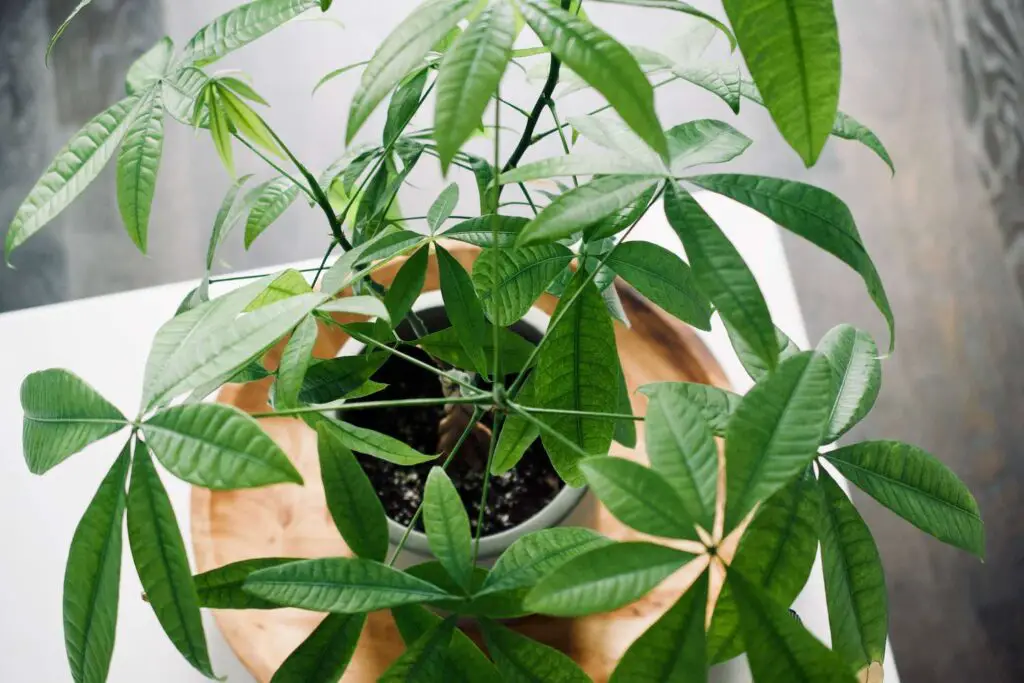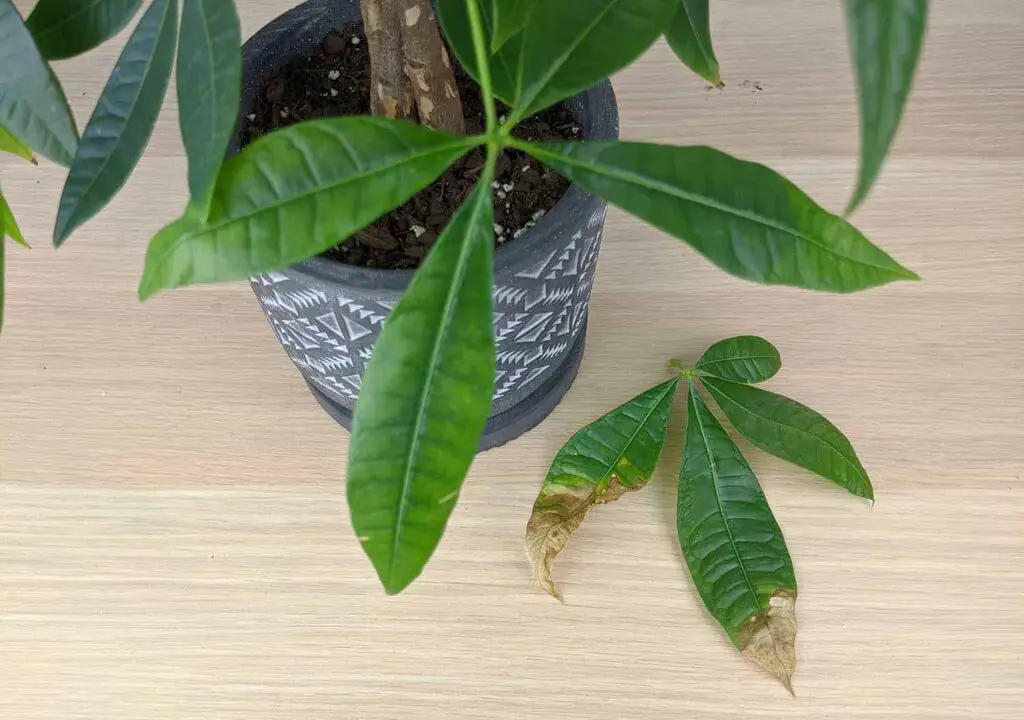To ensure a Money Tree thrives indoors, provide bright, indirect light, keep the soil slightly moist, and maintain humidity levels. Fertilize once a month during the growing season and repot every few years to promote healthy growth.
Understanding the Money Tree
The Money Tree, scientifically known as Pachira aquatica, is a popular houseplant renowned for its unique braided trunk and lush green leaves. Originating from tropical regions of Central and South America, this plant is often associated with good fortune and prosperity. Its resilience and ease of care make it a favorite among plant enthusiasts and beginners alike.

Money Trees can grow quite large in their natural habitat, but when cultivated indoors, they typically reach a height of 3 to 6 feet. Their appealing appearance and air-purifying qualities contribute to their popularity in homes and offices. With proper care, a Money Tree can thrive for many years, becoming a beautiful addition to any indoor space.
Optimal Light Conditions
Light is one of the most crucial factors for the successful growth of a Money Tree. These plants thrive in bright, indirect sunlight. Too much direct sunlight can scorch their leaves, while insufficient light may hinder their growth. Here are some tips for providing the right light:
- Place your Money Tree near a window with filtered light.
- Avoid placing it directly in front of south-facing windows.
- If natural light is limited, consider using grow lights to supplement.
Watering Guidelines
Proper watering is essential to keeping a Money Tree healthy. Overwatering is one of the most common mistakes made by plant owners. Here are some important watering tips:

- Water only when the top inch of soil feels dry to the touch.
- Ensure that the pot has drainage holes to prevent waterlogging.
- Reduce watering frequency during winter months when plant growth slows down.
Humidity and Temperature Requirements
Money Trees prefer a humid environment, which can be challenging in drier indoor settings. To maintain optimal humidity levels, consider the following strategies:
- Place a humidifier near the plant.
- Group plants together to create a more humid microclimate.
- Mist the leaves regularly to increase humidity.
The ideal temperature range for a Money Tree is between 60°F and 75°F (15°C to 24°C). Keep it away from cold drafts or sudden temperature changes, as these can stress the plant.
Soil and Fertilization
The right soil mix is vital for the health of your Money Tree. A well-draining potting mix is recommended to ensure that excess water can escape. You can either purchase a pre-mixed potting soil or create your own using these components:

- 1 part potting soil
- 1 part perlite or coarse sand
- 1 part peat moss or coconut coir
Fertilization also plays an important role in promoting growth. During the growing season (spring and summer), use a balanced liquid fertilizer every four weeks. Reduce or stop fertilizing during fall and winter when the plant’s growth slows down.
Pest Management
While Money Trees are generally hardy, they can attract pests such as spider mites, mealybugs, and aphids. Regularly inspect your plant for signs of infestation, such as webbing or sticky residue. If pests are detected, take action promptly:
- Wipe leaves with a damp cloth to remove pests.
- Introduce natural predators like ladybugs for larger infestations.
- Use insecticidal soap or neem oil as a treatment option.
| Care Aspect | Recommended Practice |
|---|---|
| Light | Bright, indirect sunlight |
| Watering | Water when the top inch is dry |
| Humidity | Maintain high humidity levels |
| Temperature | 60°F to 75°F (15°C to 24°C) |
Repotting Your Money Tree
Repotting is an essential part of Money Tree care. It allows the plant to have fresh soil, more space to grow, and helps prevent root rot. Typically, a Money Tree should be repotted every two to three years or when you notice roots growing out of the drainage holes.
Here are some steps to follow when repotting your Money Tree:

- Select a New Pot: Choose a pot that is one size larger than the current one. Ensure it has drainage holes.
- Prepare the Soil: Use a well-draining potting mix, similar to what you used during the initial planting.
- Remove the Plant: Gently remove the Money Tree from its current pot. Tap the sides of the pot if necessary to loosen the soil.
- Inspect the Roots: Check for any dead or rotting roots. Trim them off with sterilized scissors.
- Place in New Pot: Add some fresh soil to the bottom of the new pot, place the tree in, and fill in around the sides with more soil.
- Water Thoroughly: Water the plant well after repotting to help it settle into its new home.
Pruning for Health and Shape
Pruning is another important aspect of caring for your Money Tree. It helps maintain the plant’s shape and encourages bushier growth. Here are some tips for effective pruning:
- Use clean, sharp scissors or pruning shears to avoid damaging the plant.
- Remove any dead or yellowing leaves to improve overall health.
- Trim long stems to encourage branching and a fuller appearance.
- Aim to prune in early spring before the growing season begins, as this is when the plant can recover most effectively.
When pruning, it is essential to avoid excessive cutting. Always make sure that at least a few leaves remain on each stem to allow for continued photosynthesis and growth.
Common Problems and Solutions
Even with proper care, Money Trees can face various issues. Recognizing and addressing these problems early can save your plant. Below are common problems and their solutions:
Leaf Yellowing
Yellowing leaves can indicate overwatering or nutrient deficiencies. To address this issue:
- Check the soil moisture. If it is too wet, allow the soil to dry out before watering again.
- Consider fertilizing if you haven’t done so in a while, especially during the growing season.
Wilting Leaves
If your Money Tree’s leaves are wilting, it may be underwatered or suffering from low humidity. Follow these steps:
- Water the plant thoroughly and ensure it drains well.
- Increase humidity by misting or using a pebble tray with water.
Pest Infestations
Pests such as spider mites and aphids can affect your Money Tree’s health. If you notice any pests:
- Isolate the affected plant to prevent spreading.
- Treat with insecticidal soap or neem oil, following package instructions.
The Benefits of Having a Money Tree Indoors
Apart from its aesthetic appeal, having a Money Tree indoors offers several benefits:
- <
- Humidity Regulation: The plant releases moisture into the air, contributing to a more humid environment which can be beneficial in dry climates.
- Aesthetic Value: With its unique appearance, a Money Tree adds a touch of elegance and tranquility to any space.
li>Air Purification: The Money Tree is known for its ability to filter toxins from the air, improving indoor air quality.
Incorporating a Money Tree into your home decor not only enhances the visual appeal but also promotes a healthier living environment. By following these care tips and being attentive to your plant’s needs, you can enjoy a thriving Money Tree for years to come.
Propagation Techniques for Money Trees
Propagating a Money Tree can be an exciting way to expand your indoor garden. This process allows you to create new plants from an existing one, ensuring that you can enjoy the beauty of Money Trees in multiple locations or share them with friends and family. There are several methods for propagating Money Trees, but stem cuttings are the most common.
Stem Cutting Method
Here’s how to propagate your Money Tree using stem cuttings:
- Select a Healthy Stem: Choose a healthy stem that is at least 6 inches long and has several leaves.
- Make the Cut: Use clean, sharp scissors to cut the stem just below a leaf node. This is where roots will grow.
- Prepare for Rooting: Remove the lower leaves from the cutting, leaving only a few at the top. This helps focus energy on root development.
- Rooting Hormone (Optional): Dip the cut end in rooting hormone to promote faster root growth.
- Place in Water or Soil: You can propagate the cutting in water or plant it directly in a small pot with well-draining soil. If using water, place the cutting in a clear container to monitor root development.
- Provide Proper Conditions: Keep the cutting in a warm, bright location away from direct sunlight. Change the water every few days if propagating in water.
- Transplanting: Once roots are a few inches long (usually in a few weeks), transplant the new plant into a pot with soil.
Choosing the Right Location for Your Money Tree
The location of your Money Tree significantly influences its growth and health. Selecting an appropriate spot involves considering light, temperature, and humidity levels. Here are some tips for choosing the right location:
- Natural Light: As mentioned earlier, place your Money Tree in a spot with bright, indirect light. A few feet away from a window is often ideal.
- Avoid Drafts: Keep the plant away from doors and windows that frequently open or areas with drafty air conditioning or heating.
- Temperature Stability: Ensure that the temperature remains relatively stable, avoiding extreme fluctuations.
Seasonal Care Adjustments
As season
s change, so do the needs of your Money Tree. Understanding these seasonal adjustments can help ensure that your plant remains healthy throughout the year.
Spring and Summer Care
During these growing seasons, your Money Tree will benefit from increased attention:
- Increase Watering: As temperatures rise, the plant may require more frequent watering. Monitor soil moisture closely.
- Fertilization: Fertilize monthly with a balanced fertilizer to support new growth.
- Humidity Needs: Maintain humidity levels through misting or using a humidifier, especially during hot months.
Fall and Winter Care
In fall and winter, the plant enters a dormant phase, and care should be adjusted accordingly:
- Reduce Watering: Allow the soil to dry out more between waterings. Overwatering can lead to root rot during dormant months.
- Avoid Fertilizing: Stop fertilizing during this period, as the plant’s growth slows significantly.
- Adjust Light Exposure: Days are shorter; consider moving your plant closer to light sources if necessary.
Troubleshooting Tips for Common Issues
If you encounter issues with your Money Tree, here are some troubleshooting tips to help resolve common problems:
Brown Leaf Tips
Browning leaf tips may indicate low humidity or underwatering. To remedy this, increase humidity around the plant by misting or using a pebble tray filled with water. Ensure you are also watering adequately without allowing the soil to become overly dry.
Root Rot
Root rot often occurs due to overwatering or poor drainage. If you suspect root rot:
- Remove the plant from its pot and examine the roots.
- Trim away any black or mushy roots with sterilized scissors.
- Repot in fresh soil and ensure your pot has proper drainage holes.
Pale Leaves
Pale leaves may signify insufficient light or nutrient deficiency. To address this issue:
- Move the plant to a brighter location, ensuring it still receives indirect light.
- Add a balanced fertilizer every four weeks during the growing season to replenish nutrients.
Additional Care Tips for Long-Term Success
To ensure your Money Tree continues to thrive over the years, consider these additional care tips that can enhance its health and longevity:
Regular Monitoring
Keep an eye on the overall health of your Money Tree. Regular monitoring can help you catch potential issues before they escalate. Pay attention to:
- Leaf Color: Watch for changes in leaf color, which could indicate problems with light or water.
- Growth Patterns: Notice if your plant is growing too slowly or not at all, which can indicate a need for repotting or fertilization.
- Pest Activity: Look for signs of pests such as webs, sticky residue, or visible insects.
Seasonal Decor
The Money Tree can also serve as a vibrant part of your seasonal decor. For example, during the holiday season, you can decorate it with lights or ornaments to enhance its visual appeal while celebrating.
Encouraging Growth through Pruning
In addition to the pruning tips mentioned earlier, consider the following techniques to encourage healthy growth:
- Pinching Back: Pinch back the tips of new growth to encourage branching and a fuller appearance.
- Rotate the Plant: Rotating the Money Tree periodically will help ensure even growth on all sides.
Choosing the Right Potting Mix
The choic
e of potting mix can significantly impact the growth of your Money Tree. Here are some factors to consider when selecting a mix:
- Drainage: Ensure the potting mix allows for good drainage to prevent root rot. Look for mixes that contain perlite or vermiculite.
- Nutrient-Rich: Opt for a mix that includes organic matter to provide essential nutrients.
- pH Balance: A slightly acidic pH level (around 6.0 to 7.0) is ideal for Money Trees.
Final Thoughts
Caring for a Money Tree may seem daunting at first, but with the right knowledge and techniques, it can flourish beautifully in your indoor space. The key components of successful Money Tree care include providing adequate light, maintaining proper watering habits, ensuring humidity levels are suitable, and being attentive to any signs of distress.
By understanding the specific needs of your Money Tree and adjusting care as necessary throughout the seasons, you can enjoy a thriving plant that not only enhances your home decor but also contributes to a healthier indoor environment. Remember that patience and observation are vital in plant care. With these tips in mind, you are well-equipped to nurture your Money Tree into a long-lasting and cherished part of your home.
Incorporate these care strategies and watch as your Money Tree grows and flourishes, bringing joy and prosperity into your life.
